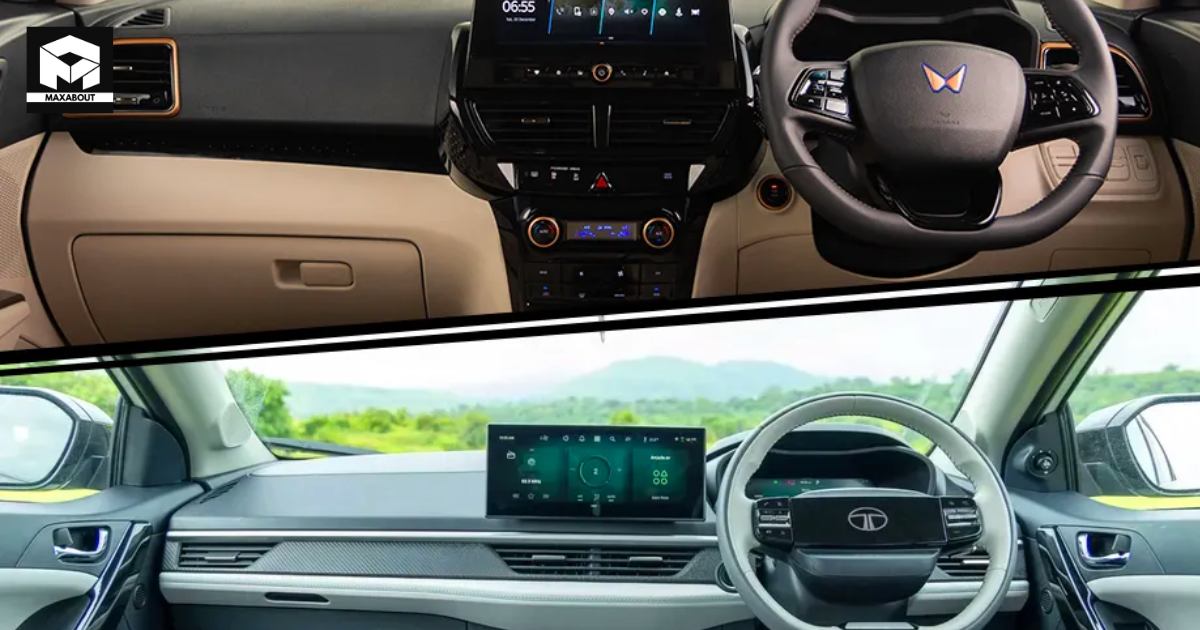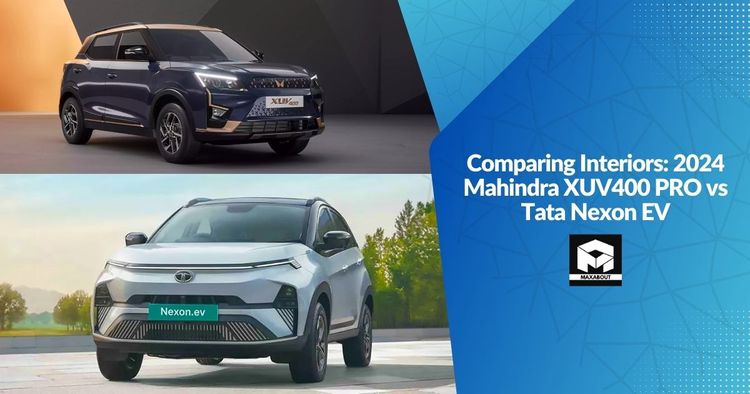After just a year since its launch, Mahindra has introduced a significant update to the XUV400 in the form of the new PRO variants and these variations provide the electric vehicle (EV) with a new look and additional functions. This was especially important for the XUV400 because the Tata Nexon EV its main competitor had just received improvements which made it clear that the XUV400 needed to improve its features, comfort, and looks. After this upgrade, let's take a closer look at a comparison of their cabin designs.
Both Mahindra and Tata have aimed for a premium look in their respective vehicles, but their approaches couldn't be more different. The XUV400 embraces a conventional design with a robust dashboard, while the Nexon EV adopts a minimalist approach with sharper lines, creating a sleeker appearance.
One notable improvement to the EV in terms of entertainment systems is the 10.25-inch touchscreen that the XUV400 now has. However, the Nexon EV takes the lead with a larger, more premium-looking 12.3-inch infotainment system featuring a slimmer bezel. The air conditioning controls in the Nexon EV are touch-sensitive, offering a modern aesthetic, in contrast to the XUV400's conventional setup with physical knobs and dials. Some may prefer the latter for its ease of use, especially when on the move.
The steering wheels in the two vehicles also differ – the Nexon EV sports a two-spoke unit, while the XUV400 opts for a new flat-bottom three-spoke steering wheel. Although the latter exudes a sportier vibe, the Nexon's steering wheel emanates a sense of premium sophistication, complete with an illuminated logo and piano black finish.
Interior Themes

Mahindra has made significant strides in updating the XUV400's interior with new dual-tone beige/black and white/black color schemes. This transformation creates a more airy and appealing ambiance compared to the outgoing all-black hue. On the other hand, Tata has introduced variant-wise interior themes for the Nexon EV, including Black and blue with white highlights, Black and purple, and Black and white themes, providing customization options for buyers.
Features
Despite the improvements brought in by Mahindra, the Nexon EV maintains its lead in terms of features. The Nexon EV boasts a plethora of features, including a 12.3-inch touchscreen infotainment system, a 10.25-inch driver's display, a 360-degree camera, ventilated front seats, a wireless phone charger, a 9-speaker JBL sound system with a subwoofer, a sunroof, and connected car technology. Notably, it also offers vehicle-to-load (V2L) and vehicle-to-vehicle charging capabilities essentially transforming it into a portable power bank capable of charging other electric vehicles.
While the XUV400 has seen improvements in its feature offerings, including a 10.25-inch touchscreen system, 10.25-inch digital driver’s display, wireless Android Auto and Apple CarPlay, dual-zone climate control, a 6-speaker sound system, a height-adjustable driver seat, rear AC vents, USB type-C charging ports, wireless phone charging, and over 55 connected car tech features, the Nexon EV still stands out with its expansive features list.
Safety
In terms of safety features both vehicles share a common set, including six airbags, electronic stability control (ESC), automatic headlights, and rain-sensing wipers. However, the Nexon EV goes a step further by incorporating blind spot monitoring providing an additional safety element. It's worth noting that Tata is the sole contender offering six airbags as standard across its entire range.
With this latest update, Mahindra has not only revamped the XUV400's cabin but has also adjusted the prices, now ranging between Rs 15.49 lakh and Rs 17.49 lakh. In comparison, the Tata Nexon EV is priced between Rs 14.74 lakh and Rs 19.94 lakh (ex-showroom).
This update undoubtedly brings the XUV400 a well-deserved cabin makeover making the overall package more appealing, all at a relatively more competitive price point. However, when compared to the feature-rich Nexon, the XUV400 still maintains a slightly conventional approach and may lack a few advanced features. The fact that the Nexon EV is more expensive than other models highlights the proverb that nothing worthwhile in life is free. As the Mahindra XUV400 and Tata Nexon EVs stand as chief rivals, they present themselves as an affordable alternative in the electric vehicle landscape, especially when compared to the MG ZS EV.

